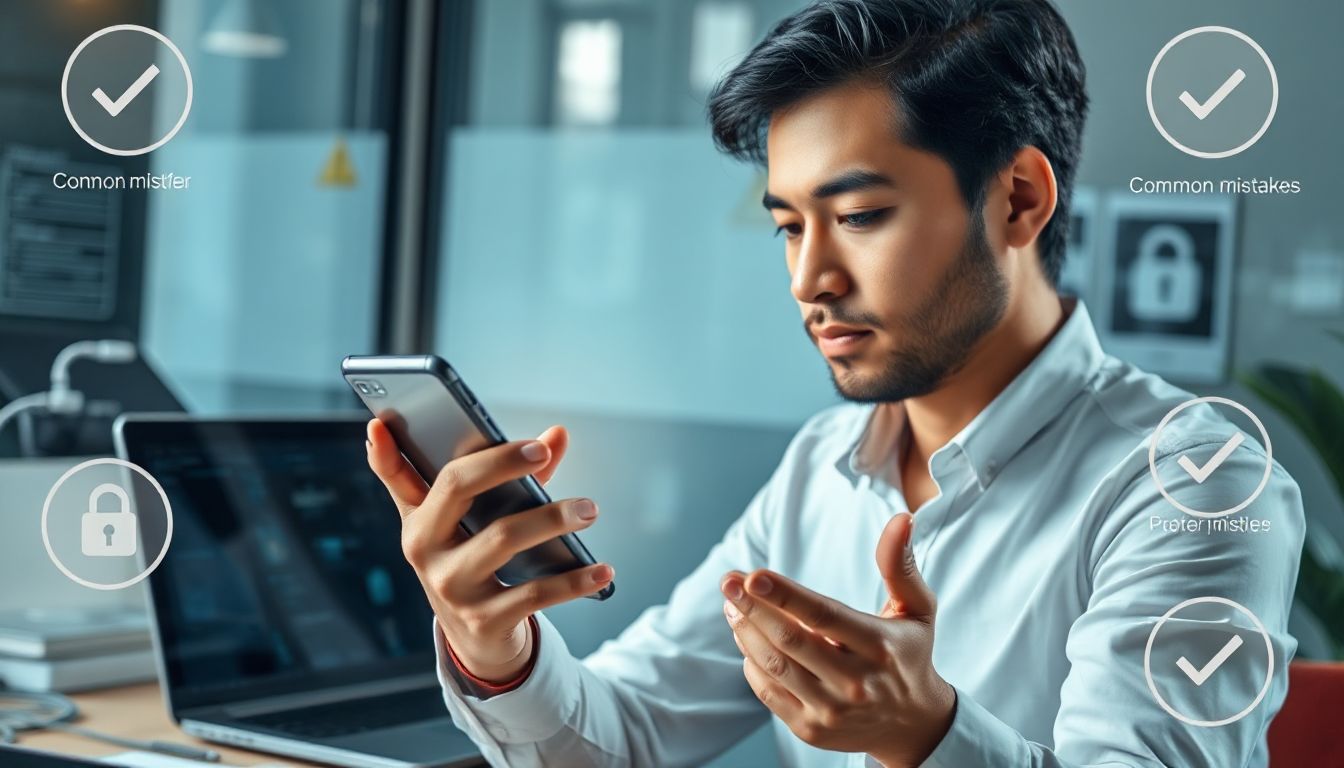Introduction
Switching devices is common today. Whether you’re upgrading a phone or switching computers, moving your data is unavoidable. But, this process comes with risks. Data breaches, hacking, or accidental leaks could happen if you’re not careful. That’s why knowing what mistakes to avoid is crucial. Keep reading to learn how to transfer devices safely and protect your accounts.
Not Backing Up Data Properly Before Transfer
Importance of Data Backup for Security and Continuity
Backup is your best defense before switching to a new gadget. Serious issues may arise if passwords, pictures, or vital files are lost. Backups ensure you don’t lose valuable info if something goes wrong. Plus, they make the switch smooth and quick. Always make a backup of your passwords, app data, and personal information.
Common Backup Mistakes to Avoid
- Relying only on cloud backups without encryption can risk your data.
- Forgetting to check if the backup worked before starting the transfer.
- Not creating a backup of all essential files may leave gaps.
Best Practices for Secure Backup
- Use encrypted backup services to protect your data.
- Keep copies in multiple places, like a cloud and physical storage.
- Verify backups to confirm all info is safe before switching devices.
Ignoring Two-Factor Authentication (2FA) and Account Security Measures
Ensuring 2FA Is Enabled on All Critical Accounts
Two-factor authentication adds an extra layer of security. Confirm 2FA is enabled on email, banking, and social media accounts. This helps block unauthorized access during device changes. Studies show 2FA can prevent about 99% of hacking attempts.
Managing App and Service Authentication During Transfer
Re-authenticate your accounts after switching devices. Don’t share 2FA codes with anyone. Temporarily disable 2FA if possible, then turn it back on once setup is complete. This prevents hackers from hijacking accounts during transfer.
Updating Security Settings Post-Transfer
Change passwords if you think they might be compromised. Re-enable all security features like fingerprint or facial recognition. A quick security review protects your data from being accessed by outsiders.
Using Unsecured or Public Wi-Fi During Device Setup
Risks Associated with Public Wi-Fi Networks
Public Wi-Fi can seem convenient but is risky. Attackers use these networks to intercept data or hijack sessions. An example: hackers using free Wi-Fi at coffee shops to access sensitive info. Avoid entering passwords or making transactions on these networks.
Actionable Tips for Secure Connectivity
- Use a Virtual Private Network (VPN) when setting up your device on public Wi-Fi.
- Always set up your private network at home or at work.
- Wait to download apps or sign into accounts until you’re on a trusted network.
Additional Precautions
Avoid installing new apps or sharing personal data over open networks. Full device setup is safer over a secure Wi-Fi connection. Protect your info by delaying risky actions until you’re on a trusted connection.
Failing to Remove or Deauthorize Old Devices and Accounts
Risks of Keeping Old Devices Linked
Leaving old devices connected can be dangerous. If they’re lost or stolen, someone else might access your accounts. Old devices can also leak outdated info or data.
Proper Deauthorization and Removal Process
Always remove devices from your accounts after switching. Check your account settings for device management. Remove any old or unused devices linked to your email, cloud storage, or apps.
When to Perform Deauthorization
Do it immediately after setting up your new device. Also, check regularly if any devices still have access and remove them if needed. Routine reviews keep your accounts safe.
Neglecting Software Updates and Security Patches
Why Updates Are Critical During Device Transfer
Keeping your device updated closes security gaps hackers might exploit. Updates fix bugs and improve security. Missing these patches leaves your device vulnerable during the transition.
Common Oversights
People often postpone updates to save time or miss notifications. But skipping updates can mean missing critical security patches, putting your data at risk.
Recommended Update Practices
Set your device to install updates automatically. Do updates right after setup. This simple step keeps your device protected without extra hassle.
Conclusion
Switching devices doesn’t have to be risky if you’re careful. Avoid common mistakes: neglecting backups, ignoring security features, using public Wi-Fi, not removing old devices, and skipping updates. Take short, simple steps, like backing up properly, enabling two-factor authentication, using secure networks, removing old devices, and updating software. This approach keeps your data safe and your accounts secure. Always think ahead, protecting your info during device transfer is well worth the effort.
